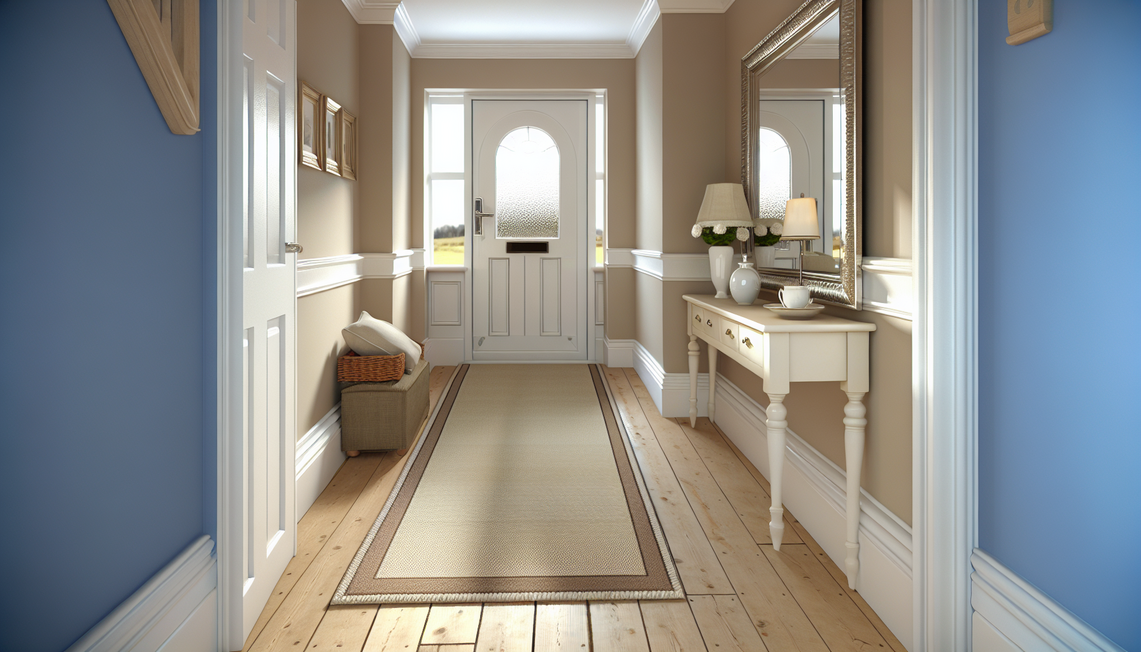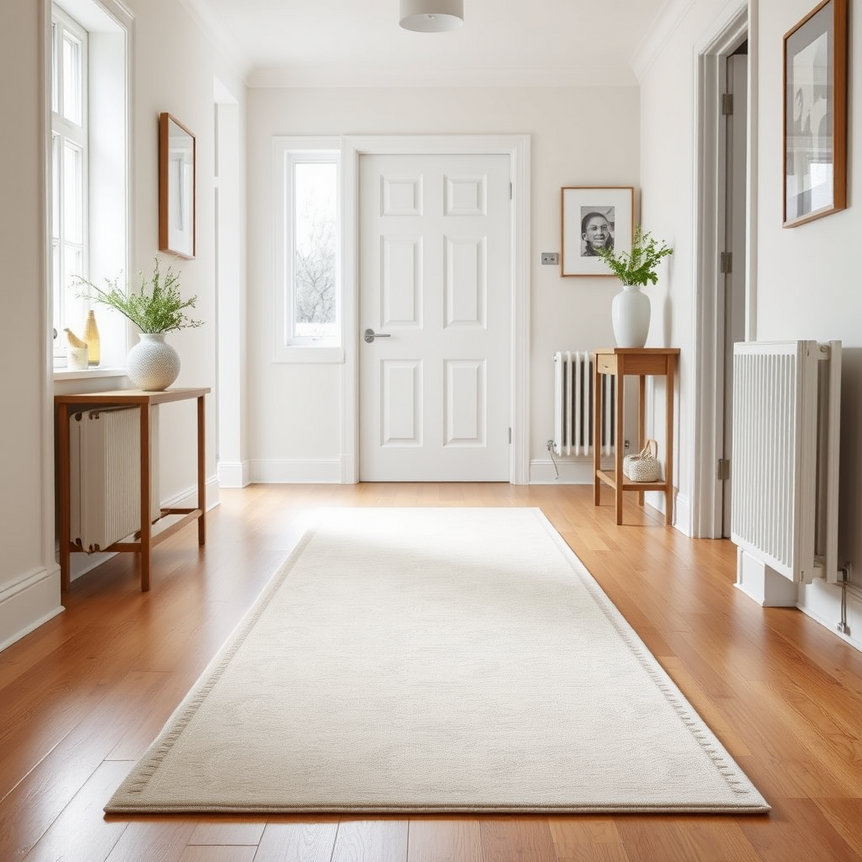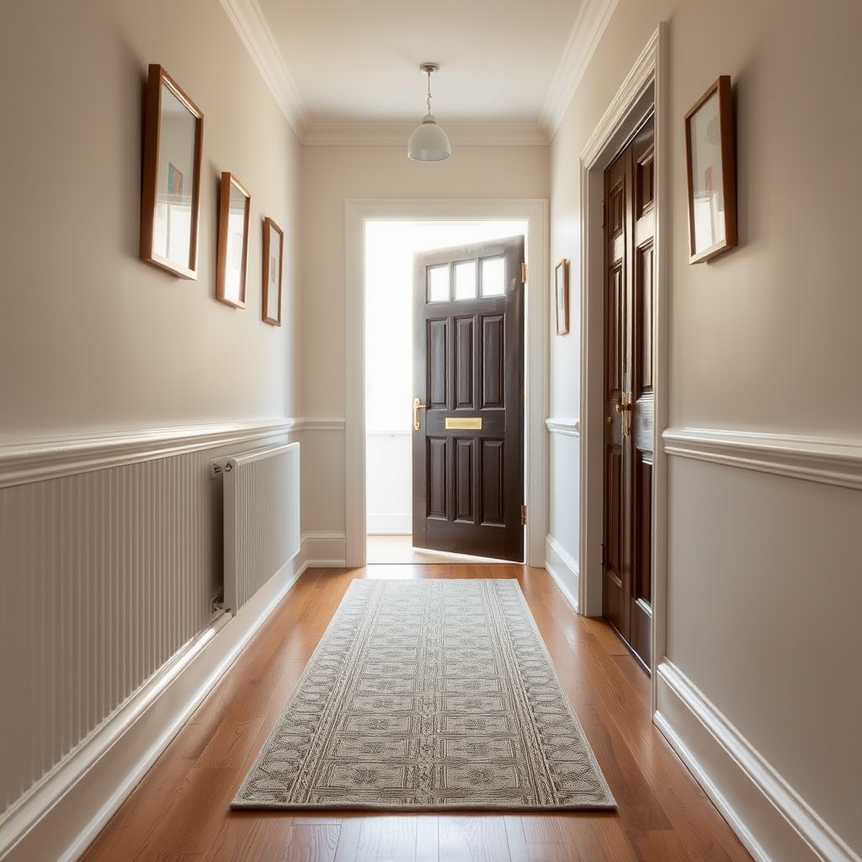Choosing the right size hallway runner is a pivotal decision for any UK home, influencing not just the aesthetics but also the safety and functionality of your space. A well-selected hallway runner acts as a focal point, enhances comfort, and protects your flooring from the daily wear and tear of family life. This ultimate guide will walk you through everything you need to know about hallway runner sizes, specifically tailored for UK dimensions, ensuring you make an informed choice that perfectly complements your home.
Understanding Hallway Runners: Why Size Matters for Your Space
In the varied architecture of UK homes, from Victorian terraces to modern new-builds, hallways often present unique challenges. A properly sized hallway runner is crucial for both functional and aesthetic reasons. Here’s why size is paramount:
- Enhances Safety: Hallways are high-traffic zones, and a well-placed runner provides secure footing, significantly reducing the risk of slips on polished wooden or tiled floors – a common concern in many contemporary UK homes.
- Protects Flooring: Your flooring is an investment. A quality hallway runner shields hardwood, laminate, or carpeted areas from scratches, scuffs, and the constant tread of shoes, preserving their longevity and appearance against the typical UK weather.
- Complements Room Proportions: The right length and width can visually alter a hallway. A well-proportioned runner can make a narrow hallway appear longer or a short one feel more expansive, creating a balanced look that guides the eye and enhances the flow of your home.
- Improves Acoustics: Hard surfaces in hallways can amplify sounds. A runner helps to dampen footsteps and reduce echoes, a valuable feature in multi-storey or terraced houses common across the UK, contributing to a quieter and more peaceful home environment.
Correct sizing ensures your chosen hallway runner fits harmoniously within your space, preventing awkward gaps or overcrowding that can cause tripping hazards or detract from your carefully curated décor.
Measuring Your Hallway Accurately: Step-by-Step UK Dimension Guide
Before you begin browsing for your perfect hallway runner, precise measurement is non-negotiable. Follow these steps to ensure you get the dimensions right for your UK home:
Tools Required:
- Steel tape measure (metric is preferred for UK standards, e.g., in centimetres)
- Notepad and pen or a smartphone for recording your measurements
- A step ladder (if you need to measure around architectural features like bannisters or ceiling coving)
Measurement Steps:
- Measure Length: Start by measuring from one end of the hallway to the other. Run your tape measure along the centre line of the floor. Be sure to account for any alcoves, doorframes, or irregular shapes in the hallway’s path.
- Measure Width: Identify the narrowest point of your hallway. This is crucial for ensuring the runner will fit without bunching. Take this measurement carefully, noting any protrusions such as radiators, skirting boards, or built-in furniture.
- Note Features: If your hallway has varying widths or unique bends, it’s best to record the length and width in segments. This will help you visualise how a standard or custom runner might fit.
Common Mistakes to Avoid:
- Measuring only at the widest point, which can lead to purchasing an oversized runner that won’t fit the entire space.
- Forgetting to subtract clearance space on either side of the runner. A gap of 10-15 cm from the walls is generally recommended for safety and aesthetic appeal.
- Not considering traffic patterns. Areas with particularly heavy foot traffic may benefit from slightly wider or more durable runners, but always ensure sufficient clearance.
Accurate measurements are the foundation for selecting a hallway runner that fits perfectly within the specific dimensions of your UK home.
Standard Hallway Runner Sizes in the UK: Options and Recommendations
While hallways in UK homes can vary greatly, most hallway runners are manufactured to common dimensions that suit typical property layouts. Understanding these standard sizes will help you quickly narrow down your options:
- Common Widths: Typically, UK hallway runners are available in widths between 60 cm (approximately 24 inches) and 80 cm (approximately 31 inches).
- Common Lengths: You’ll find lengths ranging from 1.5 metres (about 59 inches) up to 5 metres (approximately 197 inches), with many incremental sizes in between to accommodate different hallway lengths.
Choosing Based on Hallway Shape and Traffic:
- For narrow UK hallways (typically under 90 cm wide), a runner approximately 60 cm wide is often the best choice. This allows for the recommended 15 cm clearance on each side, preventing it from feeling cramped or causing a trip hazard.
- Wider hallways (over 1 metre wide) can comfortably accommodate hallway runners that are 70–80 cm wide, offering more underfoot coverage and a grander feel.
- The length of your runner should generally cover about two-thirds to three-quarters of your hallway’s total length. Aim for at least 15-30 cm of visible flooring at both ends, which helps to define the space and reduces the risk of the runner curling at the edges, which could cause trips.
For high-traffic zones, a slightly wider runner can offer greater comfort and enhanced durability, spreading wear across a larger surface area.
Matching Hallway Runner Sizes with Style and Functionality
The size of your hallway runner is not just about fit; it’s also about how it integrates with your home’s aesthetic and practical needs. It’s about finding the perfect balance that elevates your space.
Balancing Size with Material and Design:
- Material Thickness: Consider that thicker runners, or those with additional padding or anti-slip backings, will occupy slightly more visual and physical space. This might mean opting for a slightly narrower width to maintain adequate clearance from walls, especially in compact UK hallways.
- Durability: For busy UK hallways, especially those exposed to outside elements, materials like durable wool, hard-wearing synthetic blends (such as polypropylene or nylon), or sisal are ideal. These can withstand more foot traffic and are easier to maintain against common spills or mud.
- Length Considerations: Longer runners can visually elongate a hallway, creating an impressive focal point. However, remember that they may also require more diligent maintenance, as they cover a larger area prone to collecting dust and debris.
Style Tips for UK Décor Trends:
- Traditional UK Homes: Properties with classic architectural features often complement Persian-style, ornate floral, or classic patterned runners. Rich colours and intricate designs can add warmth and historical charm, enhancing features like original floorboards or period tiling.
- Modern Interiors: Contemporary UK homes with minimalist or Scandinavian-inspired designs suit geometric patterns, abstract motifs, or plain, textured runners in neutral tones. Greys, blues, and earthy shades are particularly popular, contributing to a serene and uncluttered aesthetic.
- Cohesion is Key: The colour and pattern of your chosen hallway runner should harmonise with your hallway lighting and wall colours. A cohesive look will ensure the runner feels like an integral part of your home’s design rather than an afterthought. Consider how natural light enters the hallway; lighter runners can brighten a dim space, while darker tones can add a sense of depth and luxury.
Comparison of Popular Hallway Runner Sizes and Their Ideal Uses
To help you visualise the best fit for your home, here’s a quick comparison of common hallway runner sizes and their typical applications in UK residences:
| Runner Size | Ideal Hallway Width | Best Use Case | Style Tip |
|---|---|---|---|
| 60 cm x 1.5 m | Narrow hallways under 90 cm | Small entryways or short corridors; connecting two rooms | Small, subtle patterns or plain colours to avoid overwhelming the space |
| 70 cm x 3 m | Average width 90-110 cm | Standard UK hallways; creating a welcoming path from front door | Versatile for bold patterns to add character or classic designs for timeless appeal |
| 80 cm x 4-5 m | Wide hallways above 1 m | Long corridors and high-traffic areas; grand entrances | Statement runner with intricate design or a strong geometric pattern to define the space |
Selecting the appropriate size for your hallway runner ensures safety, enhances style, and provides optimal functionality, blending harmoniously into your UK home’s unique character.
Care, Maintenance, and Longevity Tips for Your Hallway Runner
A hallway runner, by its very nature, is subject to significant wear and tear. Proper care is essential to maintain its appearance, hygiene, and extend its lifespan, especially in a busy UK household.
- Regular Vacuuming: Make hallway runner vacuuming a part of your weekly routine. This prevents dirt, grit, and dust from accumulating and embedding into the fibres, which can cause premature wear. For high-traffic areas, consider a vacuum cleaner with a powerful suction or a brush-roll setting suitable for rugs.
- Spot Cleaning: Accidents happen. Treat spills immediately by blotting (not rubbing) with a clean cloth. Use an appropriate carpet or rug cleaner for your runner’s material. Always test the cleaner on an inconspicuous area first to ensure it doesn’t cause discolouration.
- Rotation: To ensure even wear and prevent one section from fading or flattening more than others, rotate your runner every 6-12 months. This is particularly important for longer runners that might experience varying levels of sunlight exposure or foot traffic along their length.
- Non-Slip Underlays: Essential for safety in UK homes, a good quality non-slip underlay not only prevents your runner from slipping and causing trips but also provides an extra layer of cushioning and helps to extend the runner’s life by reducing friction against the floor.
- Professional Cleaning: Depending on the material and traffic, an annual professional deep clean can significantly prolong your runner’s life and refresh its appearance. This is especially beneficial for natural fibres like wool or sisal, which can trap more dirt over time.
Pay special attention to longer runners, as they tend to collect more dust and grit along their full length due to the extended path they cover.
Frequently Asked Questions About Hallway Runners and Sizing
Q: What size runner is best for narrow UK hallways?
A: For hallways narrower than 90 cm, we recommend choosing hallway runners approximately 60 cm wide. This allows for about 15 cm clearance on each side, ensuring safe passage and preventing the runner from looking too wide for the space.
Q: Can I customize a runner to fit unique hallway dimensions?
A: Yes, many UK suppliers and specialist rug retailers, including RugStars, offer bespoke or cut-to-size options for hallway runners. This is ideal for unusually shaped hallways or if you require a precise length or width that isn’t standard.
Q: How much space should be left between the runner and walls?
A: Ideally, you should aim to leave 10–15 cm (4–6 inches) of visible flooring or skirting board on either side of the runner. This creates a clean border, prevents tripping hazards, and allows your existing flooring to frame the runner beautifully.
Q: Are wider runners better for high-traffic areas?
A: Generally, yes. Wider runners offer a more expansive and comfortable surface underfoot, which can be beneficial in high-traffic hallways. They also help to distribute wear more evenly and can reduce the risk of edges curling, leading to better longevity and safety.
Q: How do UK runner size standards compare to other countries?
A: UK runner sizes typically use metric measurements and are often tailored to suit the characteristically narrower and often more segmented hallways found in British homes compared to some countries with more expansive floor plans. While general principles of clearance apply globally, the specific dimensions offered by UK retailers are geared towards local architectural styles.
Explore a wide range of hallway runners in the right sizes for your UK home at RugStars Hallway Runners. Find the perfect balance of style, safety, and durability today.



